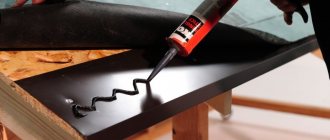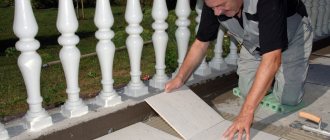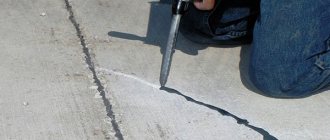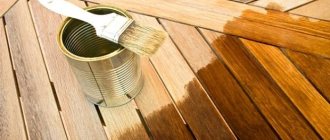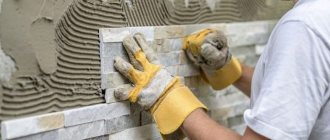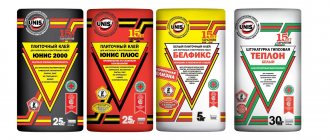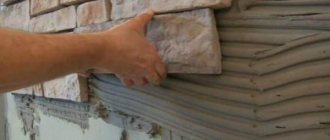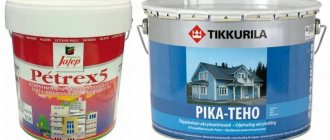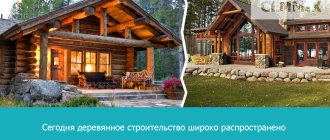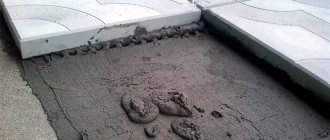Features of frost-resistant sealant
One of the main conditions for sealants used on the external sides of buildings:
- Resistance to ultraviolet rays. Substances not endowed with this quality are damaged by sunlight and no longer fulfill their purpose of sealing coatings. Considering that most regions of Russia are characterized by frosty winters, building materials, raw materials for filling and repairing buildings, must withstand low-temperature exposure. Therefore, only frost-resistant sealant is used for outdoor work.
- In the middle zone and southern regions there are often dry and hot summers. In such cases, in areas open to the sun, buildings can warm up to significant levels. Sealants used for external functions must withstand such heat and must not crack, dry out, or leak from sealed joints.
- The influence of precipitation, frost and dew causes damage to ordinary sealants, so raw materials for external work are chosen that are resistant to moisture and that will not be washed off with water.
- Under the influence of temperature changes, building materials change their dimensions. When the materials being joined are of different types, they will change their dimensions in their own way, thereby deforming the joint. To form a high-quality seam and so that it does not lose its sealing properties for a long time, the mixtures for sealing must have good adhesive ability to surfaces and excellent ductility.
Work processes for sealing seams on the street side are accompanied by large labor costs and are done infrequently.
So, the sealants used for external seams must maintain their characteristics over a long period of service - up to 15-20 years or more.
Scope of use
The use of external sealant depends on its type:
- Silicone universal sealing compounds - movable seams for sealing external surfaces of any type.
- Bitumen - foundation, laying roofs, sealing cracks in them, insulating metal and wooden poles from moisture.
- Thiokol - prevents contact of surfaces with chemical liquids, which is important when building garages.
- Polyurethane – attics and roofs, repair of ventilation systems, PVC sealing.
Frost-resistant sealant for external work can be used in the construction of wooden houses. Then it is recommended to use elastic compounds, which will stretch and return to their original shape when the temperature changes.
When working with brick and metal, high adhesion is important. Compositions for these materials must be resistant to ultraviolet radiation, high temperatures, and humidity. Polyurethane sealants are excellent for panel buildings and sealing facade seams.
For roofing work, the sealing compound must be ready to withstand all temperatures and weather conditions. When building roofs, bitumen mixtures perform best. It is also good to use rubber or silicone compounds. They are suitable for building new roofs and repairing old ones.
Types of frost-resistant sealants
Many types of sealing compounds are used. The distinguishing factor is the underlying substance:
- Polyurethane products. They are distinguished by plasticity, strength, and resistance to mechanical influences. Suitable for work processes with different materials, do not emit toxic substances, the cured layer can be painted;
- Silicone models. These compositions are waterproof, plastic, and resistant to temperature changes. Contains rubber, due to which this rubber sealant is safe and has a long service life;
- Bitumen compounds. They are made from bitumen polymers obtained by processing residues of petroleum products. Suitable for use even in drainage systems, because they are resistant to moisture. Brown sealant accommodates rubber and bitumen. There are also colorless mixtures, they are more expensive, but they are compatible with all materials;
- Acrylic types. They come in different colors and contain acrylic polymers. The product is water resistant and therefore suitable for outdoor use. When applying the material, it needs dryness and warmth to fully reveal its insulating properties. The composition will dry in a day;
- Butyl types. Designed for sealing double-glazed windows;
Acrylolatex sealing
Acrylolatex compounds also cope well with the task of sealing for outdoor work. They are frost-resistant and moisture-resistant. They tolerate different temperatures well, withstand ultraviolet rays and humidity.
Acrylic latex or siliconized compounds adapt well to deformations, the seam remains tight and at the same time elastic. After hardening, such a surface can be painted.
Differences in sealants by color
Hermetic type adhesive is available in a wide range of colors:
- Transparent – used for operations with wooden windows;
- Brown - used to seal chocolate-colored surfaces;
- Whitish - used for functions with plumbing fixtures and window frames, and also for filling cable ducts;
- Colored – used for windows and plumbing needs, you can choose the product in the desired color;
- Black is a product for outdoor procedures, resistant to sun radiation. Can be used for facade and roofing procedures. It is often taken for repairs in transport.
Differences between sealants by properties
Depending on the parameters, the sealant can be:
- Moisture resistant – designed for use in moisture-saturated rooms, such as kitchens or bathrooms;
- Frost-resistant - designed for sealing joints at low temperatures. This product is intended for use even in extremely cold conditions;
- Heat resistant product. Its purpose is to seal parts of stoves, heating structures and other high-temperature systems. It does not warp under the influence of high temperatures and maintains its characteristics.
Roofing silicones
Silicone sealant is the most popular and versatile. However, their purpose is slightly different. Sometimes it is necessary that after application the joint is not only strong, but also flexible.
Due to their composition, silicone sealants react better with surfaces where a classic sealant would not be sufficient.
- Roofing silicone should not be acidic, as this will accelerate corrosion of roof structural elements.
- Therefore, it is best to rely on natural silicones, which have the best reviews.
- The fact is that roofing silicone is not easy to paint (like acrylic or rubber).
- Therefore, try to immediately choose a suitable color, and do not choose, for example, colorless.
Of course, roofing silicones are not always the best solution - you can choose acrylic, bitumen or putty.
Everything will depend on the type of work being performed or the requirements that the seam must meet.
Areas of application of waterproof sealant
Waterproof and frost-resistant types of sealants are used in winter, because other models will not withstand climatic conditions. In the construction industry, this material is used to insulate roof joints, especially when it is made from modern raw materials, since they require additional protection where the seams lie.
- Façade sealant can seal any gaps on the front of a structure, and the paintability of this material keeps it hidden from view. Cracks often appear on panel houses, and because of them, the wind often blows in winter.
- Thanks to the sealant, this problem can be eliminated, but when the gaps have not yet spread in size. It is important to take a closer look at the lower part of the building - after all, a solid foundation will allow the house to have stability and strength.
- The sealant, due to its versatile properties, is able to stop cracks in the base and hold it together for many years.
There are always defects on the external surfaces of new buildings and old buildings that should be eliminated at the initial stages, while the violations are small and can be corrected using simple means.
Thanks to a variety of silicone sealants, it is quite possible to combine elements of concrete and metal, fill voids and correct what did not work right away or was damaged over time.
How to determine consumption?
Before you start, calculate the approximate cost of the funds. To do this, determine the depth and width of the crack that needs to be eliminated. Consider the depth of the joint.
Multiply the resulting figure by the width. The result will be in mm. This will be the consumption of sealant per meter of joints. By the way, for triangular results you need to divide them in half. Then the consumption of material will be significantly reduced.
Take into account the characteristics of the external sealant. The manufacturer's instructions indicate how much compound is needed to seal the gaps.
Technique for applying frost-resistant sealant
If we talk about the method of use, it is not complicated and is familiar to those who have worked with sealants at least once. To do this, take a specialized gun that runs on electric, mechanical or pneumatic.
- The sealant is squeezed out in an even layer, and you need to make sure that the seam is not too thin and not too thick.
- To fill the gap, you need to insert the edge of the nozzle into its niche and then squeeze out the substance, passing along the entire length of the gap.
- You need to act quickly with these compounds, because some of them harden at a rapid pace.
It is not recommended to straighten the seam with your hands, as the sealant will stick to the skin and will be difficult to remove.
Useful tips
When working with frost-resistant sealants, you need to use rubber gloves. When excess appears on the surface, you can remove it with a cloth and it is better to do this before the seam has completely hardened.
The aged composition is removed with a sharp object in the form of a stationery or construction knife.
It is not recommended to buy cheap compounds. Inexpensive sealants from little-known manufacturers may include various additives or may not have the necessary resistance to frost and weather influences.
In retail outlets you can find products from both foreign and Russian manufacturers. In application, there is no difference between them, but you have to pay more for an imported product. It is important to verify the frost and moisture resistance of the proposed product.
Advantages of formulations
External sealant is needed for complex and delicate work. Most of these products are completely safe for the external environment and for the health of the craftsman who interacts with them. You should only be careful with polyurethane-based sealants.
The advantages of materials include:
- High flexibility. Due to their good elasticity, the compounds will fill many cracks and holes.
- Strength. This helps to tackle the most labor-intensive processes outside buildings.
- Resistance to temperature changes. They are not afraid of either heat or cold.
- High adhesion. Such compositions adhere strongly to most known materials.
- Resistance to high humidity. They do not lose their original properties even in a humid environment.
Among the components in the composition are plasticizers, coloring elements and fillers. Typically, manufacturers of sealing products maintain a good balance between quality and cost. But there are also relatively expensive goods.
Finding cheaper (and lower quality) products is also possible. However, we advise you not to save money, because the stingy often has to pay twice.

